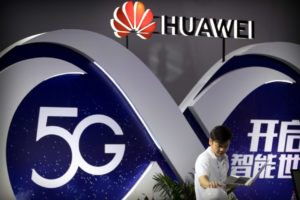
September 14, 2019//-New fifth-generation (5G) telecoms are increasing concerns about keeping trade secrets safe.
As more devices and individuals connect to 5G networks, Chinese-owned 5G vendors such as Huawei — and, through them, the Chinese government — could obtain unprecedented access to the world’s data.
“Countries should not allow 5G to be yet another vector for China to acquire intellectual property from us,” U.S. cyber diplomat Robert Strayer said in May.
Intellectual property rights in China and the U.S.
The United States has established one of the world’s most robust intellectual property protection systems, which has helped enhance the U.S. lead in innovation. Intellectual property (IP) must be protected. Otherwise, millions of dollars spent on research and development are lost when ideas are stolen and competitors bring the same product or service to market.
In contrast, China’s top-down, state-run economy blurs the line between the public and private sectors. For example, for more than five years, the Chinese government used its Ministry of State Security to hack into a French aerospace company’s computers to obtain turbofan engine technology, according to U.S. indictments.
At the time, a Chinese state-owned aerospace company was working to develop a comparable engine to use in commercial aircraft manufactured in China and elsewhere.
What is intellectual property?
The World Intellectual Property Forum defines intellectual property as “creations of the mind, such as inventions; literary and artistic works; designs; and symbols, names and images used in commerce.”
These creations are protected by law. This allows the creators to benefit from their work and use their unique ideas to drive businesses, art and design.
Costs of IP theft
Pilfering trade secrets, bribing employees and hacking into foreign computers — these are just three ways that Chinese companies have stolen foreign inventions and intellectual property in a bid to become the world’s technology superstar.
“China has a long history of undertaking intellectual property theft to benefit its commercial interests where it is able to gain access,” Strayer said.
The U.S. Trade Representative found in 2017 that Chinese theft of American IP currently costs America between $225 billion and $600 billion annually.
One high-profile example occurred in 2018, when a Beijing-based wind turbine company was found guilty in the U.S. of stealing intellectual property from a U.S. company — an act that caused the value of the Massachusetts-based company to fall by more than $1 billion, with a loss of almost 700 jobs, according to evidence presented at the trial.
Unfortunately, China’s IP theft is not limited to U.S. companies. China has engaged in “trillions of dollars of intellectual property theft” around the world, often hacking into companies’ computers to do it, according to the 2018 U.S. National Cyber Strategy. These sophisticated attacks include stealing business patents, technology, trademarks and copyrights.
For example, Huawei, the second-largest smartphone manufacturer in the world, stole the arm of a robot that German subsidiary T-Mobile invented to test smartphones, the U.S. government said in a 2018 indictment. Huawei planned to duplicate it.
Similarly, two Chinese government hackers were charged in 2018 with taking business secrets from an array of aerospace, energy, telecom, medical and other companies in Canada, France, Germany, Japan, Sweden, Switzerland, the United Kingdom and the United States.
Unfortunately, resolving IP theft can take years. For example, it was only after 30 months of litigation that a Chinese company called XTAL was found guilty in 2019 of stealing more than 100,000 files — including source codes, pricing strategies, software, secret algorithms and user manuals — from a Dutch technology company.


